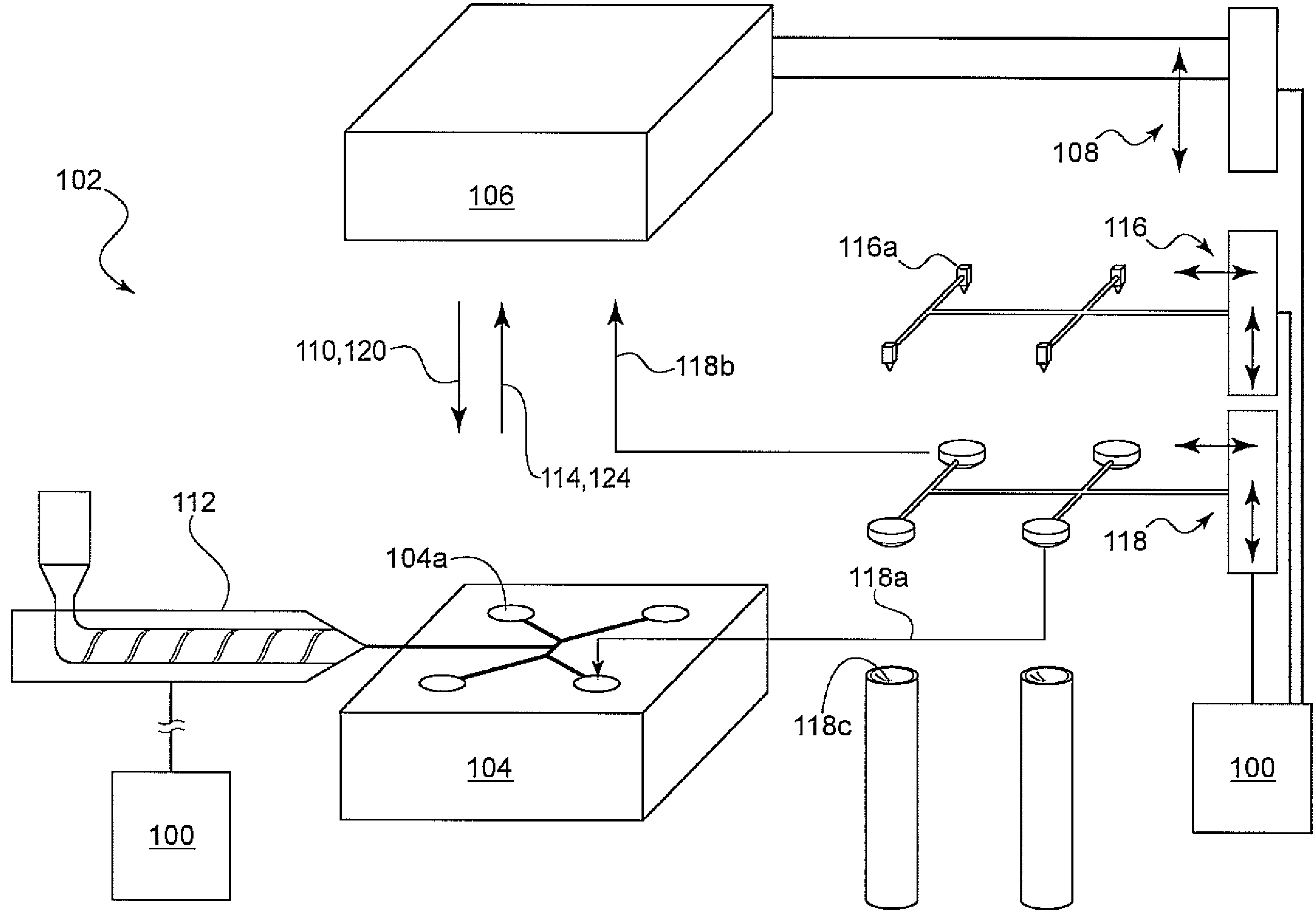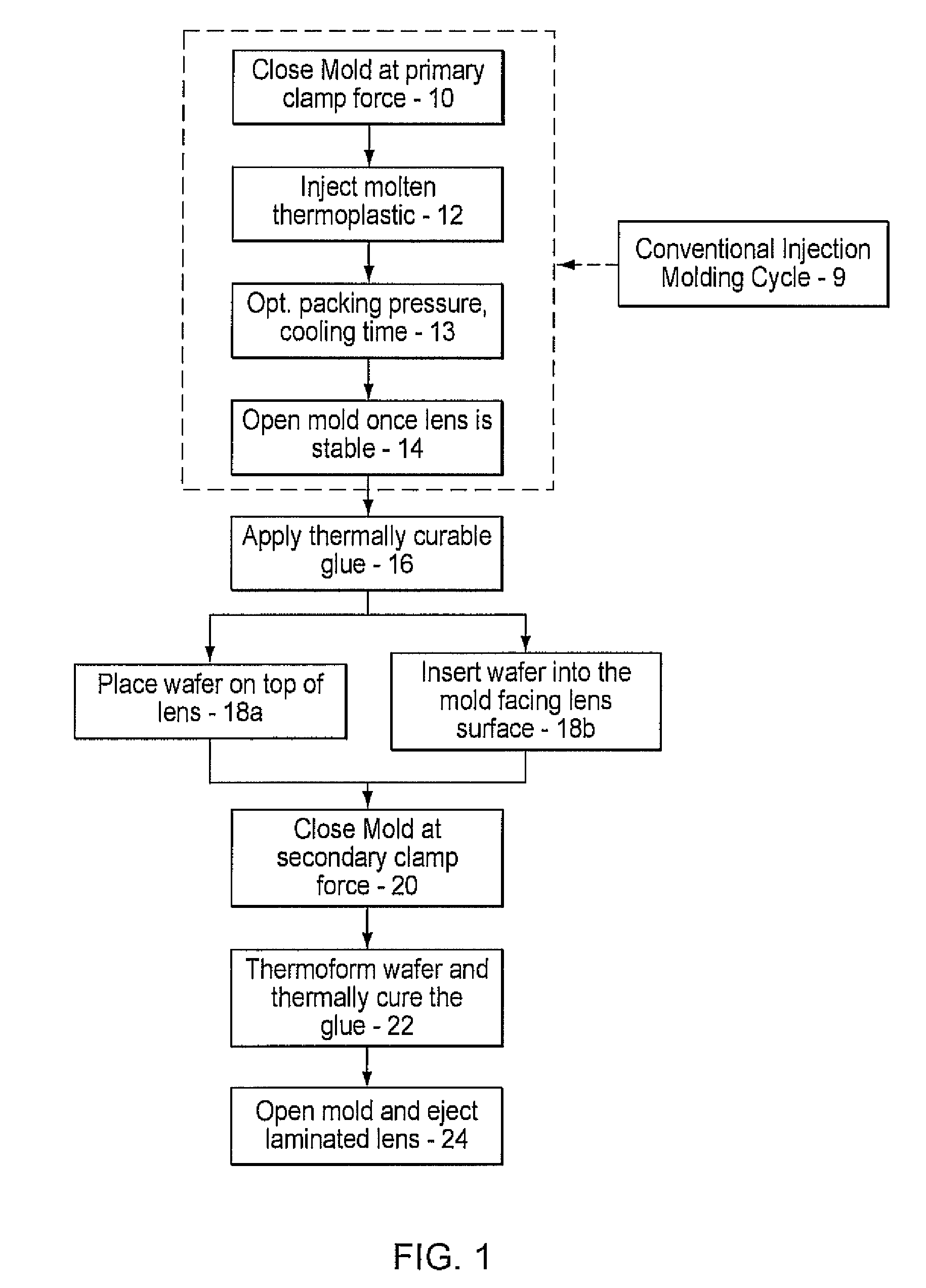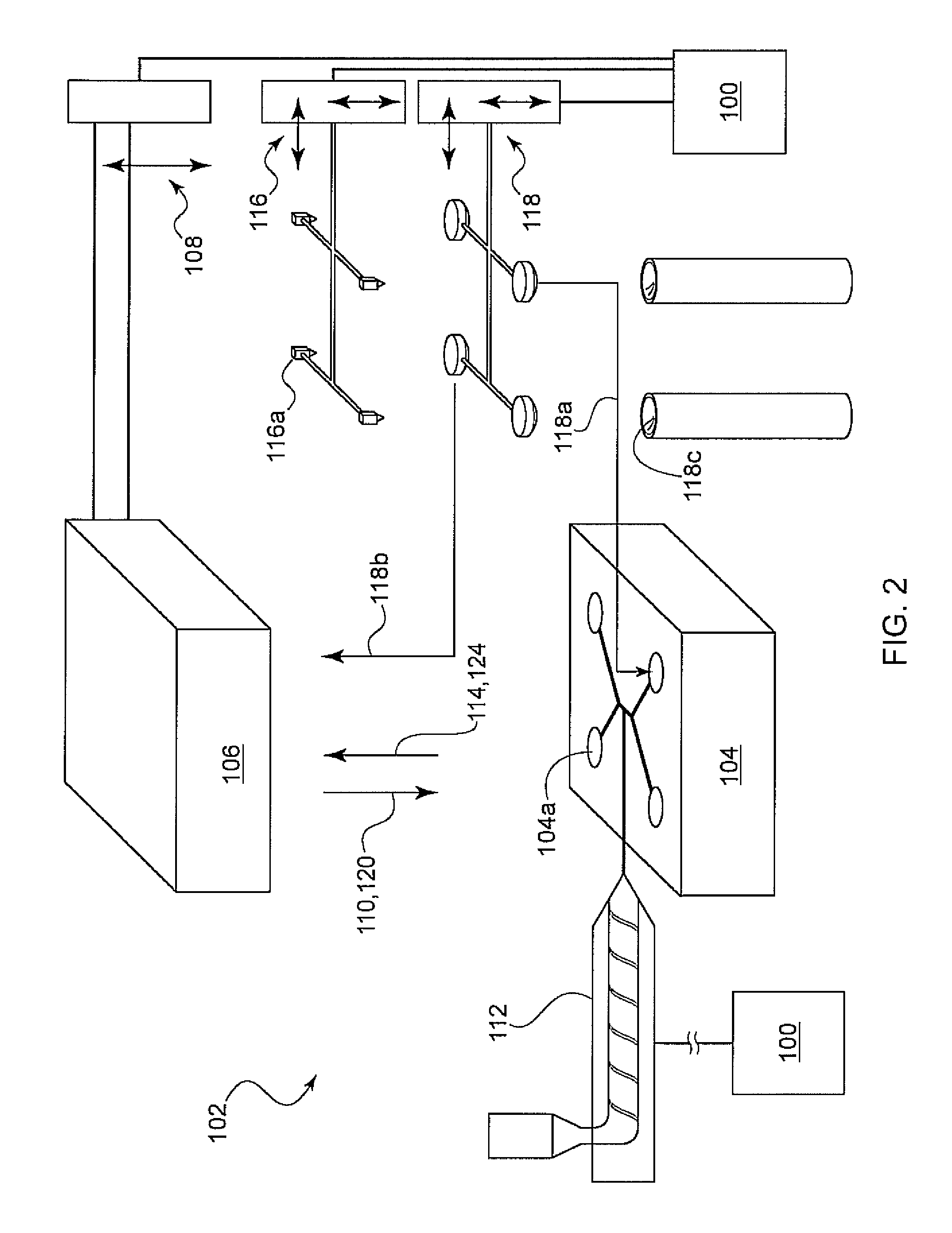Method for post-injection lamination to add a functional film to an optical lens
a functional film and lens technology, applied in the direction of coatings, applications, instruments, etc., can solve the problems of degrading or partially destroying the functionality built into the film, requiring resources and energy, and cleaning and dip coating process requires a large investment of space, so as to achieve the effect of combining a functional film and a lens
- Summary
- Abstract
- Description
- Claims
- Application Information
AI Technical Summary
Benefits of technology
Problems solved by technology
Method used
Image
Examples
example 1
[0028]Post injection in-mold lamination experiments were conducted using an Engel ES700H 150 US ton vertical injection molding machine equipped with a 2-cavity side-entry mold. Polarizing films having a PVA (polyvinyl acetate) polarizing element sandwiched between two polycarbonate (PC) sheets were laminated to polycarbonate (PC) lenses using acrylate based glue.
[0029]The experiments were conducted according to the steps mentioned above. First, two 6.50-base SFSV (semi-finished single vision) PC lenses, 76 mm in diameter and 9 mm in thickness, were injected using the following process parameters. The melt temperature Tm was 510 degrees F. in the screw injector. The mold temperature was 260 degrees F. The shot size was 2.50 inches, and the injection speed was 0.1 inch / s. The packing pressure had a machine specific reading of 800 psi, which was estimated to deliver an actual packing pressure of 9,000 psi onto the molten resin. The cooling time was 4 minutes.
[0030]At the end of cooling...
PUM
| Property | Measurement | Unit |
|---|---|---|
| pressure | aaaaa | aaaaa |
| wait time | aaaaa | aaaaa |
| diameter | aaaaa | aaaaa |
Abstract
Description
Claims
Application Information
 Login to View More
Login to View More - R&D
- Intellectual Property
- Life Sciences
- Materials
- Tech Scout
- Unparalleled Data Quality
- Higher Quality Content
- 60% Fewer Hallucinations
Browse by: Latest US Patents, China's latest patents, Technical Efficacy Thesaurus, Application Domain, Technology Topic, Popular Technical Reports.
© 2025 PatSnap. All rights reserved.Legal|Privacy policy|Modern Slavery Act Transparency Statement|Sitemap|About US| Contact US: help@patsnap.com



